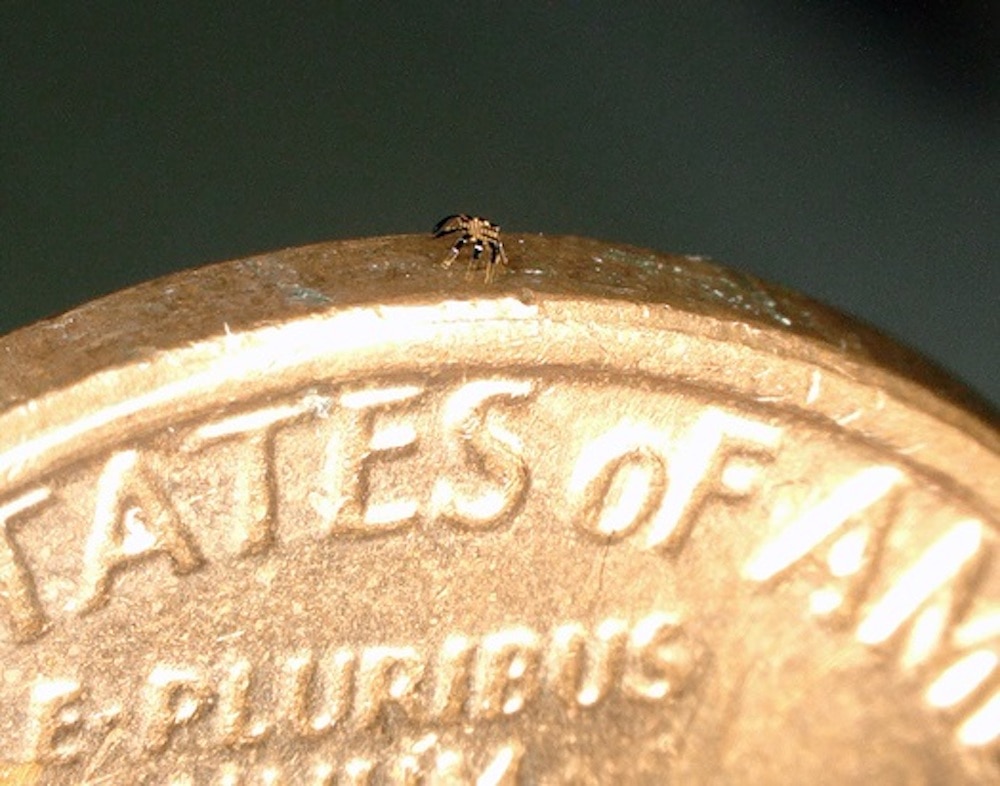Create a free profile to get unlimited access to exclusive videos, sweepstakes, and more!
World’s smallest remote control robot crabwalks on a penny
It's got better dance moves than most of us.

Ex Machina showed us what might happen if someone were able to faithfully recreate human characteristics, both physical and mental, inside of a robot. The results were impressive, if a little terrifying. While the technology presented in the film was undeniably advanced beyond our current ability, they were built upon a real-world trend in robotics.
Engineers often look toward nature for inspiration, resulting in countless bio-inspired machines, from fish made of paper, gelatin, and human cardiac cells to surgical robots inspired by octopus tentacles. Another area of interest in robotics is miniaturization, allowing scientists to take all of the abilities of the natural world into tighter spaces from industrial settings to inside the human body.
Recently, an international team of scientists and engineers took a small step toward realizing that ambition by developing the world’s smallest remote-controlled walking robot. Their results were published in the journal Science Robotics.
Given nature’s unending love for crab-shaped organisms, it’s only fitting that this new groundbreaking robot would also be a crab. This tiny machine measures in at only half a millimeter wide, allowing it to perch easily on the edge of a penny. Luckily — or perhaps unluckily, if you’re hoping to avoid a future robot invasion of tiny invertebrates — this little synthetic crab isn’t alone. It’s representative of a slate of miniature animal-inspired robots including inchworms, crickets, and beetles. If they did decide to stage a hostile takeover of our planet, we’d have at least one advantage over them, their comparatively slow speed. When moving, the robo-crabs move at a rate of roughly half their body length per second.
In pure terms, it’s not very fast at all. A quarter millimeter per second adds up to roughly three feet per hour. Scaled up to human sizes, it’s roughly two miles per hour, about half of the average walking speed.
All things considered, it’s still pretty impressive, especially when we take into account that there are no internal power supplies. Instead, these tiny machines rely on properties of their own bodies in response to laser light, for movement. The material making up the robot has shape memory, allowing it to return to its original shape when heated. Then, as it cools, it deforms again.
The deformed shape of the robots was achieved using controlled mechanical buckling inspired by children’s popup books and origami. The precursor shape of the robots is punched out then then bonded to a stretched rubber substrate. When the substrate is relaxed, the robots deform into their default setting, but they remember how they used to be.
When heat is applied by a passing laser, they relax toward their remembered shape. However, because they are so small, that heat dissipates quickly, and they shift back toward the deformed state. The repeating sequence of heating and cooling causes them to walk, crawl, or jump in the same direction as the passing heat source.
While there are no direct applications for the current assortment of tiny shuffling robots, they’re helping to crabwalk robotics into the future, a quarter millimeter at a time.


























